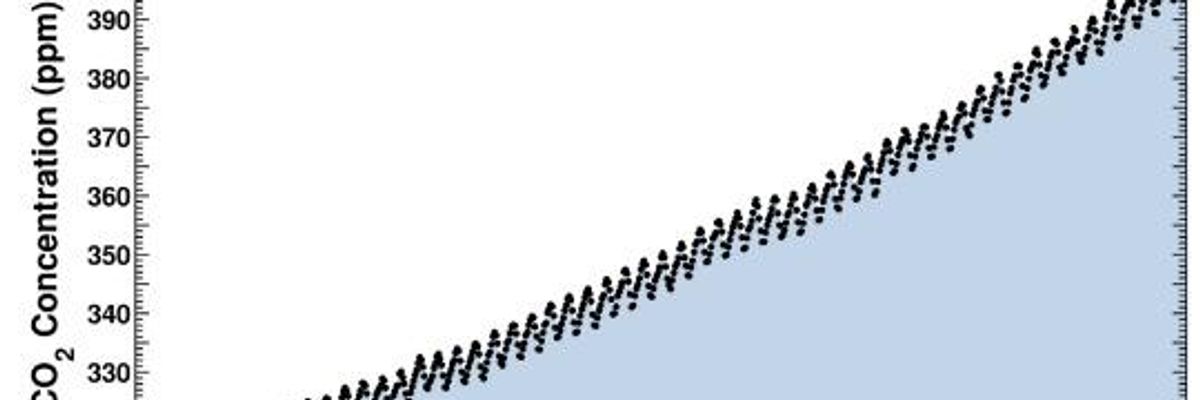The world is running out of time to take the urgent action need to rein in runaway greenhouse gases and "preserve our planet for future generations," a United Nations body warned Monday.
While the world first hit last year the "sobering milestone" of 400 parts per million (ppm) of carbon dioxide in the atmosphere, it was April 2014 that prompted the current climate warning from the World Meteorological Organization (WMO).
Last month marked the first time in human history that average CO2 levels in the northern atmosphere were above 400 ppm for the entire month.
In addition to that measurement recorded by the Scripps Institution of Oceanography at the University of California, San Diego's Mauna Loa station, which the agency refers to as a "benchmark site," the WMO states that some of the other stations that also form part of its Global Atmosphere Watch network -- those in Cape Verde, Germany, Ireland, Japan, Spain (Tenerife) and Switzerland-- reported concentrations above 400 ppm for both March and April.
"This should serve as yet another wake-up call about the constantly rising levels of greenhouse gases which are driving climate change," WMO Secretary-General Michel Jarraud said in a statement. "If we are to preserve our planet for future generations, we need urgent action to curb new emissions of these heat-trapping gases."
"Time is running out," he stated.
The agency further warned that the annual average levels of CO2 could reach 400 ppm in 2015 or 2016.
According to the National Oceanic and Atmospheric Administration's Annual Greenhouse Gas Index, greenhouse gases in the atmosphere have increased 34 percent since 1990.
"We know that the world is getting warmer on average because of our continued emissions of heat-trapping gases," stated James Butler, Ph.D., director of the Global Monitoring Division of NOAA's Boulder-based Earth System Research Laboratory.
"Turning down the dial on this heating will become increasingly more difficult as concentrations of the long-lived greenhouse gases continue to rise each year," Butler added.
To visualize the world's upward trajectory of CO2 emissions over the past few decades, the Cooperative Institute for Research in Environmental Sciences and NOAA created this 90-second video:
Time History of Atmospheric Carbon Dioxide, by CIRES & NOAAFollow us on Facebook https://www.facebook.com/CIRESnews and Twitter https://twitter.com/CIRESnews Credit: Andy Jacobson, ...


